4 steps to get LinkedIn Ads data in Keap
Understand if your LinkedIn ads are delivering leads, opportunities and customers. In this post we'll show you how to get your LinkedIn data into Keap.
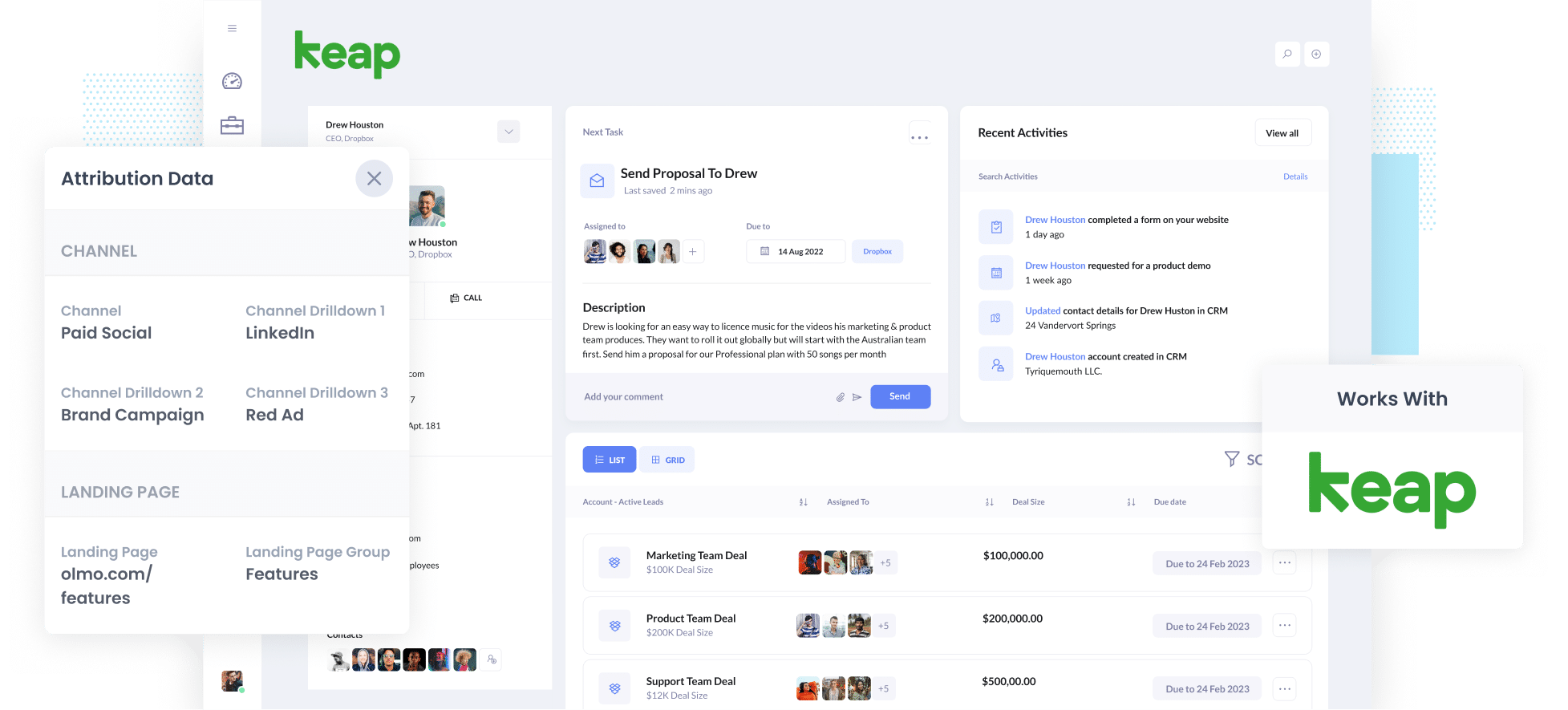
LinkedIn ads can be a strong part of a b2b business' marketing plan because the platform's targeting options allow you to segment audiences by industry, job title, seniority and more. All things you can't do in other ad networks like Facebook Ads.
However, LinkedIn ads can be expensive so it's really important to know if the ads are delivering leads and customers - not just site visits or clicks.
In this blog, I'll show you how to use a simple tool called Attributer to track how many leads and customers you receive from your LinkedIn Ads right from inside Keap.
The best way to track LinkedIn Ads in Keap
Know the number of leads and customers are generated by your LinkedIn Ads in Keap in 4 steps using a tool called Attributer:
1. Install Attributer on your website

Attributer is a piece of code you install on your website to track where your leads and customers are coming from. It works by passing this information through to Keap when a visitor submits a form on your website.
To add Attributer to your site you just include the piece of code we send you after you sign up for a free 14 day trial (instructions on how to add it can be found here).
After you've added the code to your website, you need to include some hidden fields to your forms, including:
- Channel
- Channel Drilldown 1
- Channel Drilldown 2
- Channel Drilldown 3
- Channel Drilldown 4
Attributer works with dozens of form builders (including Keap forms, Gravity Forms, Webflow Forms, Typeform and more). What's more, a step-by-step guide for adding hidden fields to dozens of form builders can be found here.
2. Add UTM parameters to your ads

Step two is adding UTM parameters to your LinkedIn Ads.
UTM parameters are simply pieces of text that you add to the end of the URL you are sending people to from your campaigns.
If the page you are sending someone to is attributer.io/integrations/keap then your final URL (with UTM parameters) could look like this:
attributer.io/integrations/keap?utm_medium=paidsocial&utm_source=linkedin&utm_campaign=brand-campaign
UTM parameters help analytics tools like Attributer (and others) see where your leads come from, which campaign they saw, what ad they clicked, etc.
3. LinkedIn Ads data is sent to Keap
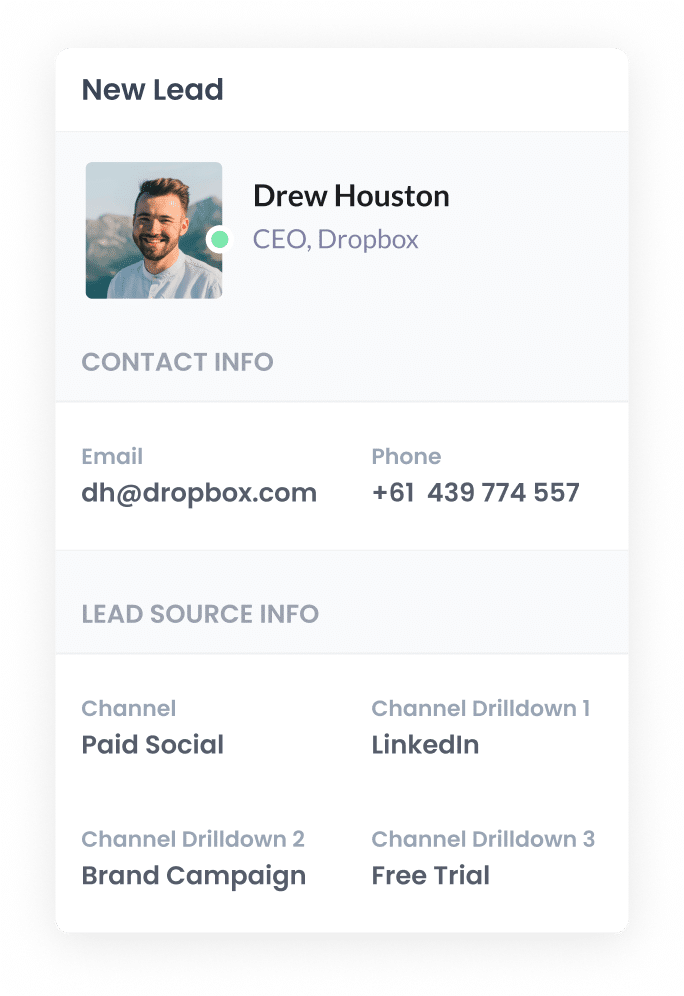
Once Attributer is running and UTM parameters have been added behind your ads, Attributer starts looking at where your website visitors are coming from (including those from your LinkedIn Ads).
Attributer then categorizes each visitor into a series of channels (like Paid Social, Paid Search, Organic Search, etc) and stores the information in a cookie in the visitor's browser.
When a visitor submits your form, Attributer populates the information on where they came from into the form's hidden fields.
That data can now be sent to Keap alongside the lead's name, email, company and any of the other information you capture in your forms.
4. Run reports to see which ads are performing
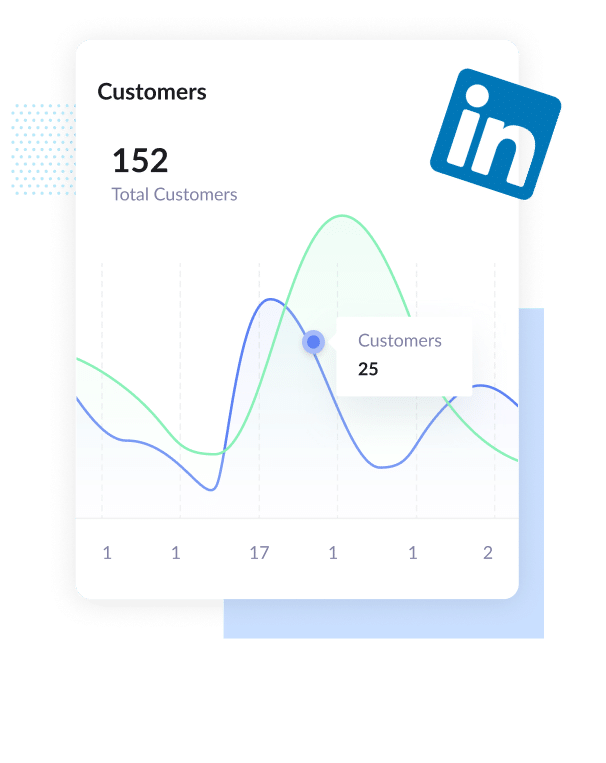
When your LinkedIn Ads data is flowing into Keap, you can use it to run reports to see what's delivering the best ROI. You can do this using either Keap's native reporting tools, or in a reporting tool you have connected to Keap (such as Tableau, Microsoft Power BI, Looker, etc.)
With this data you can now run reports that show the number of leads you receive from your LinkedIn Ads, which campaigns are generating the most leads, what the conversion rate from lead to opportunity is, what the close rate is, and how much revenue has been generated, etc.
What is Attributer and why use it?
Attributer is a piece of code you add to your website. Attributer is built to track where your leads and customers are coming from and populates the data into hidden fields behind your forms. After a form is completed, the attribution data is captured by your form tool and sent to Keap.
Why is this so handy? Well, imagine for a moment you're running marketing activities for a company that provides window cleaning and someone clicks on one of your ads, it would pass through the following information (depending on what you put in the UTM parameters):
- Channel: Paid Social
- Channel Drilldown 1: LinkedIn
- Channel Drilldown 2: Window Campaign (or the specific campaign name)
- Channel Drilldown 3: Spring Ad (or whatever ad creative they clicked on)
Attributer is the best way to track your LinkedIn Ads in Keap because it:
- Captures marketing attribution information - Attributer captures information on the leads who arrive on your site through other channels like Paid Search, Organic Search, Organic Social, Referral, or Direct.
- Remembers the data - Attributer stores the UTM parameters in a cookie in the user’s browser, so even if a visitor leaves your site and comes back, the UTM parameters are still passed through.
- Cleans the data - Attributer was built to handle data discrepencies in UTM usage. For example if you're using utm_source=linkedin in some campaigns and utm_source=LinkedIn in others. It knows where to assign these leads to the correct channel (Paid Social in this case) regardless of these discrepancies.
4 example reports you can run when you track LinkedIn Ads data in Keap
Attributer was launched after I encountered marketing attribution issues at every company I worked for over the past 15 years.
Over that time, I've spent upwards of $1 million on LinkedIn ads, plus more on other advertising networks. I've also spent countless hours running reports to see how those ads were performing.
Here are a few of the reports I found most useful to make better marketing decisions:
1. Leads by channel

The leads by channel chart above shows how many leads you receive each month broken down by the channel they came from. It is a great way to get a high level perspective on where your leads are coming from.
It's useful because if you see that the majority of your leads are coming from Organic Search (like in the chart above) but you're spending most of your budget on LinkedIn Ads, then it could be time to rethink your strategy.
2. Opportunities by network
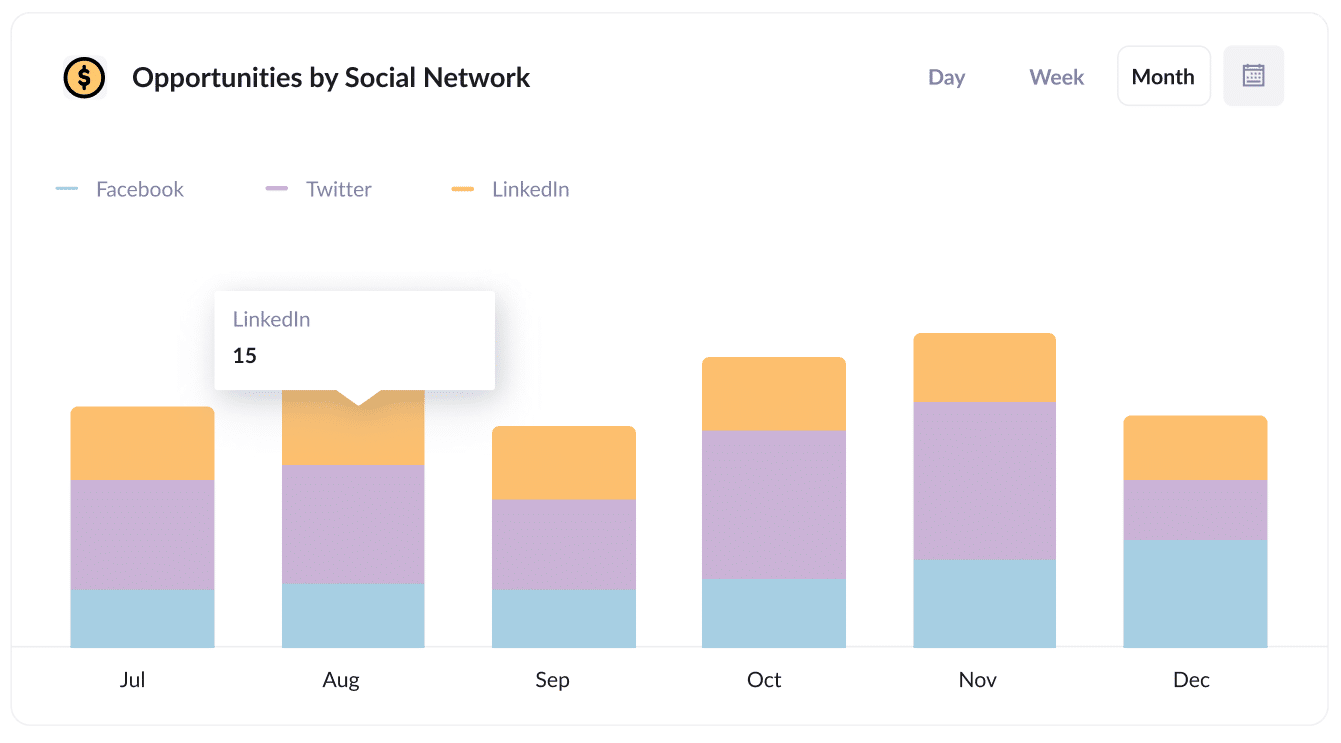
When you run ads across multiple platforms, this report helps by showing how many customers you get from your ads on each network so you can better understand where to focus your budget to get the strongest results.
3. Customers by campaign

The customer by campaign chart above shows the number of customers you receive from the LinkedIn Ads you are actively running.
It helps you to better understand which campaigns deliver customers to your business (as opposed to just bringing visitors or leads that don't convert).
4. Revenue by ad
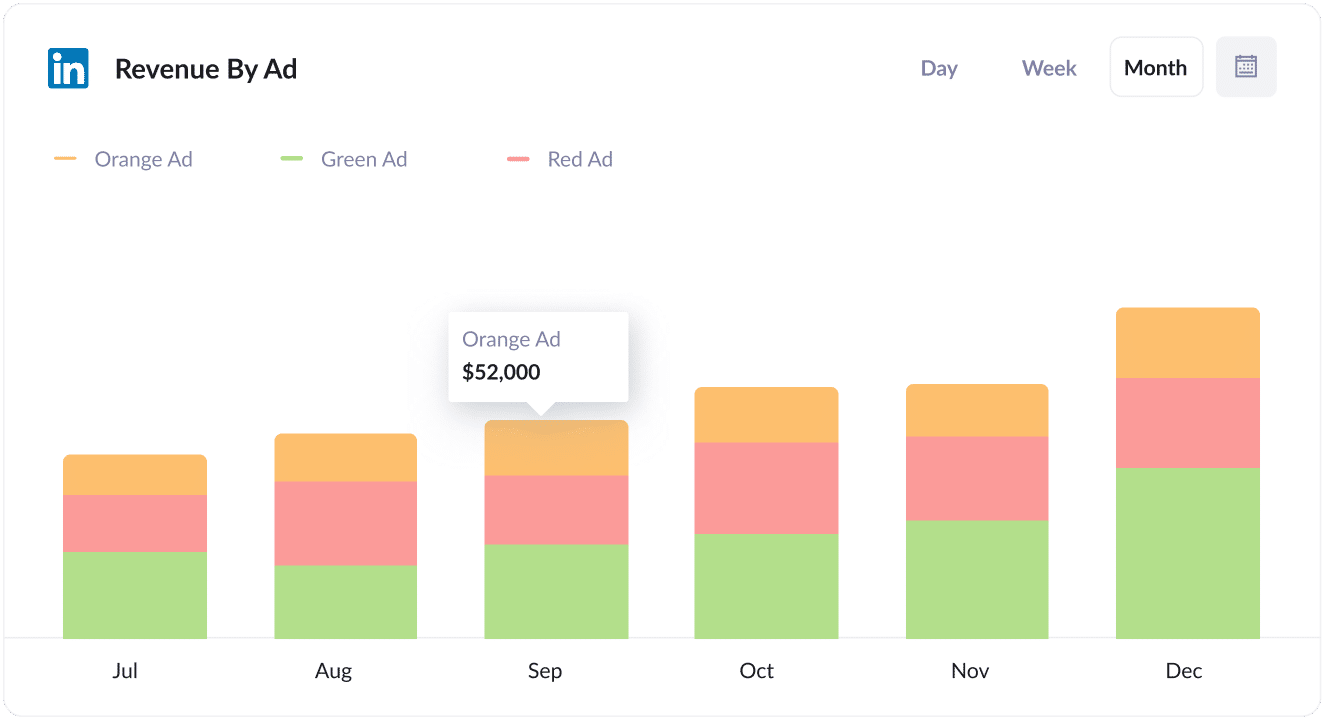
This revenue by ad chart shows you how much revenue is generated by each of the ads you are running on LinkedIn.
It helps you figure out which of your creatives are attracting the kind of leads that convert into customers, and bonus! It can help you improve your ad creative.
Wrap up
Tracking the number of leads and customers you are getting from your LinkedIn Ads is what Attributer was built to do.
Attributer enables you to see the source of your leads, right down to the exact campaign, ad set, or ad they clicked. It also let's you see it in your existing tools (I.e. Keap) rather than having to learn a whole new environment.
Best of all, it's free to get started and only takes about 10 minutes to set up. So start a free 14-day trial of Attributer today to see how it can help you!
Get Started For Free
Start your 14-day free trial of Attributer today!

About the Author
Aaron Beashel is the founder of Attributer and has over 15 years of experience in marketing & analytics. He is a recognized expert in the subject and has written articles for leading websites such as Hubspot, Zapier, Search Engine Journal, Buffer, Unbounce & more. Learn more about Aaron here.
